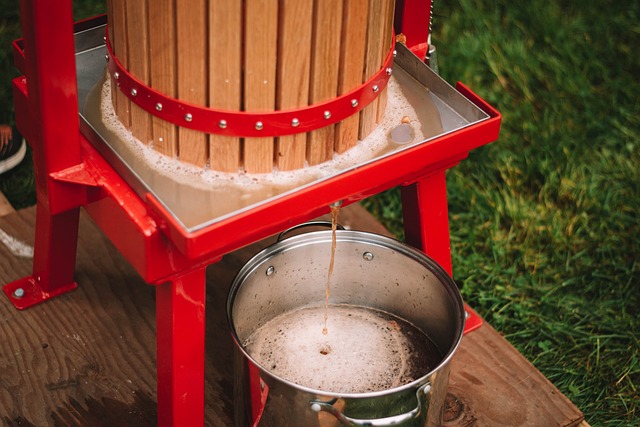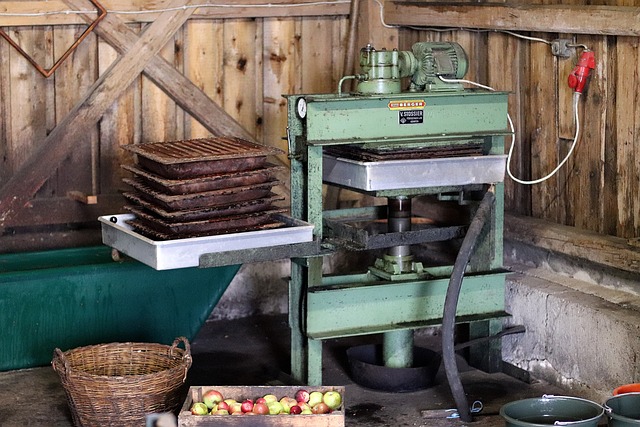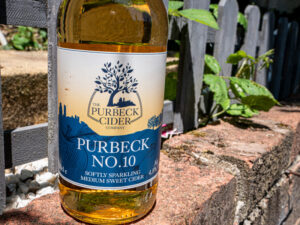
A helpful beginner’s guide to pairing cheese and cider
Back to all We live in a world where cheese

From selecting the perfect apples to fine-tuning the fermentation process, you’ll soon be sipping on your homemade cider masterpiece, delighting in the fruits of your labour.
So, get ready to embrace your inner cider enthusiast and let’s dive into the wonderful world of cider making!
KEY TAKEAWAYS
A lot can go wrong when making your own alcoholic beverage, not just with cider, so understanding the basics is very important.
Cider making involves a few key steps: pressing, fermentation, clarification, and bottling.
The process begins with extracting the juice from apples through pressing, which can be done using various equipment such as manual presses or hydraulic presses.
The extracted juice is then fermented, typically with the addition of yeast, to convert the sugars into alcohol.
After fermentation, the cider undergoes clarification to remove any sediments and achieve clarity.
Finally, the carbonation and bottling stage adds the desired level of fizz before sealing the cider in bottles or kegs.
You’re going to need a few essentials.
First and foremost, you’ll need a variety of apples suitable for cider making.
Different apple varieties bring unique flavours and characteristics to the final product, so have fun and experiment with blends.
Other necessary equipment includes a press for extracting the juice, fermentation vessels such as carboys or demijohns, airlocks, syphoning equipment, and bottles for bottling the finished cider.
Don’t forget about the yeast, which plays a vital role in fermentation, and additional ingredients like sugar if you wish to adjust the sweetness level of your cider.

Not all apples are created equal when it comes to cider production.
While some apples are excellent for eating fresh, others are specifically cultivated for cider making.
Traditional cider apple varieties such as bittersweet, bittersharp, sweet, and sharp apples each contribute unique characteristics to the cider, including sweetness, acidity, tannins, and aromatic profiles.
Here are some cider apple examples:
It’s worth researching and experimenting with different apple varieties to find the perfect blend that suits your taste preferences.
Creating a well-balanced cider requires a thoughtful combination of apples with varying levels of sweetness, acidity, and tannins.
Sweet apples add natural sugars, acidity brings a refreshing tang, and tannins provide structure and complexity.
It may take a few attempts but try blending different apple varieties, you could achieve a harmonious flavour profile that is neither overly sweet nor overly tart.
If you have access to apple orchards, consider reaching out to local growers and inquire about cider-specific apple varieties.
Farmers’ markets and specialty produce stores may also offer a selection of cider apples. Additionally, consider joining cider-making communities or online forums where enthusiasts share information and resources on sourcing apples in your area.M
Start by washing and inspecting your apples, ensuring they are free from any rot or blemishes.
Remove stems and any damaged portions before proceeding.
Some cider makers prefer to crush or chop the apples before pressing, while others press them whole.
There are various methods available for pressing apples, ranging from traditional manual presses to hydraulic presses.
Manual presses, such as basket presses or bladder presses, are often favoured by home cider makers due to their affordability and ease of use.
On the other hand, hydraulic presses offer higher efficiency and greater pressing force, making them suitable for larger-scale operations.


Place the prepared apples in the press and apply pressure to extract the juice.
Collect the juice in a clean container, ensuring there are no impurities or debris.
The quality of the juice greatly impacts the final cider, so pay attention to factors such as clarity and cleanliness.
If desired, you can strain the juice through a fine mesh or cheesecloth to remove any remaining solids.
Fermentation is a natural metabolic process in which microorganisms, such as yeast or bacteria, convert sugars or carbohydrates into other compounds, such as alcohol, gases, or organic acids, in the absence of oxygen.
It is a fundamental process used in various industries, including the production of alcoholic drinks like cider, beer, and wine, as well as the creation of fermented foods like yoghurt, sauerkraut, and kimchi.
During fermentation, microorganisms break down the sugars present in a substance through enzymatic reactions.
Yeast, specifically Saccharomyces cerevisiae, is commonly used in the fermentation of alcoholic beverages.
Yeast consumes the sugars and converts them into alcohol (ethanol) and carbon dioxide. This process not only results in the production of alcohol but also contributes to the development of flavours, aromas, and bubbles of fermented beverages.
Fermentation is a vital step in cider making as it transforms the natural sugars in apple juice into alcohol, resulting in the creation of cider. It plays a role in the flavour development, as different strains of yeast can produce varying levels of sweetness, acidity, and other desirable characteristics. The duration and temperature of fermentation also impact the final taste and profile of the cider.
Different yeast strains contribute unique characteristics to the cider.
Champagne yeast is a popular choice, producing a dry and crisp cider.
Ale yeast varieties can add fruity esters and a fuller body, while cider-specific yeast strains enhance the apple flavours and aromas.
Maintaining the appropriate fermentation temperature is critical for a successful fermentation process.
Generally, a temperature range of 60-75°F (15-24°C) is ideal for most yeast strains. If the temperature is too cold, it will take longer to ferment.
If it’s too warm, the fermentation will be quicker, which isn’t always a good thing.
Monitor the fermentation activity using an airlock or fermentation lock to ensure a steady release of carbon dioxide.
The fermentation process typically takes several weeks, but it’s important to follow the specific instructions provided with your chosen yeast strain.
Regularly check the specific gravity of the cider using a hydrometer to monitor the progress of fermentation.
Hydrometers look a bit daunting. If you were to put one into pure water, you’d get a specific gravity reading of 1.000. Sweeter ciders will typically have an OG (original gravity) within 1.040-1.055. This reading can vary based on the combination of apple varieties you have chosen. Adding more sugar or using a sweeter juice will produce a higher specific gravity.
As fermentation nears completion, the specific gravity will stabilise. Once fermentation is complete, the cider may undergo a secondary fermentation to further develop flavours and clarify the liquid.
Once the fermentation process is complete, the cider may require clarification and ageing to achieve the desired clarity, flavour, and maturity.
Let’s take a look at the important steps of clarification and ageing in cider making.
Clarification methods:
The final steps in cider making involve adding carbonation and bottling the finished product.
After bottling, the cider will undergo a period of bottle conditioning, during which the remaining yeast consumes the priming sugar, producing carbonation.
Store the bottles in a cool and dark place for several weeks to allow the carbonation to develop fully.
Proper storage conditions will also contribute to the cider’s flavour development during this time.
Failure to properly clean and sanitise your equipment can lead to contamination and spoilage of your cider.
Unwanted microorganisms can introduce off-flavours, aromas, or even ruin the entire batch. Make sure to thoroughly clean and sanitise all equipment used in the cider making process, including fermenters, airlocks, racking equipment, and bottles.
This helps prevent the growth of harmful bacteria and ensures the production of a high-quality and safe cider.
Cider making is not only a traditional craft but also an opportunity to unleash your creativity and explore a wide range of flavour variations.
With a little experimentation, you can add unique twists and personal touches to your cider.
Perhaps consider ageing your cider in oak barrels or using oak alternatives like chips or spirals.
Oak imparts flavours such as vanilla, caramel, or even a hint of smokiness, adding depth and sophistication to your cider. How spiffing!
Experiment with different levels of sweetness by adjusting the amount of residual sugar in your cider. From bone dry to semi-sweet or even dessert-style ciders, exploring the spectrum of sweetness allows you to tailor the cider to your preferences.
Vary the yeast strains used during fermentation to create different profiles.
Different yeast strains can contribute unique aromas, esters, and characteristics that complement the desired style of cider.
CIDER MAKING TIP: Keep detailed notes of your recipes and methods to track your successes and learn from any challenges along the way.
Cider making is a fascinating and rewarding craft that allows you to create your own unique beverages bursting with flavours.
From selecting the right apples to the fermentation process, clarification, and beyond, each step contributes to the final product.
Troubleshooting common mistakes is important and taking notes along the way will help keep you away from making errors again.
When experimenting with flavour variations, and honing your techniques, you can craft exceptional ciders that delight your senses.
So, gather your apples, unleash your creativity, and embark on a cider-making adventure. With patience, passion, and a thirst for exploration, you’ll savour the joy of crafting delicious ciders to share and enjoy with friends and family.
Cheers to your cider-making journey!

Back to all We live in a world where cheese

Back to all When we first started this blog, I

Back to all KEY TAKEAWAYS 4.8% ABV Amber hue Bittersweet